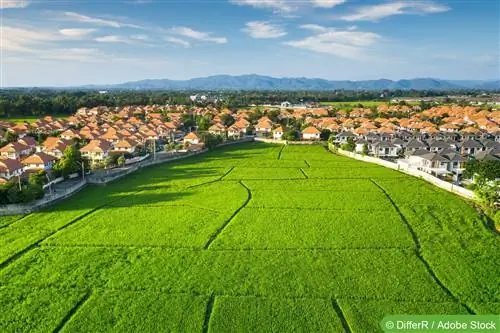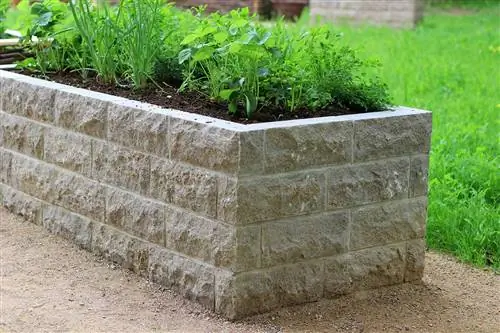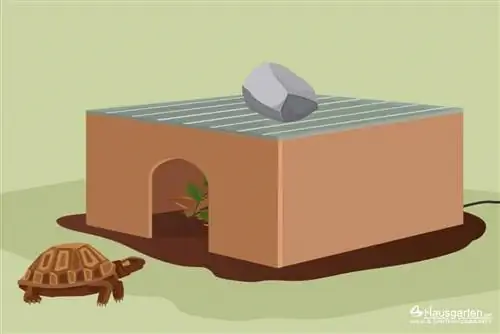- Author admin [email protected].
- Public 2023-12-17 03:39.
- Last modified 2025-01-24 12:45.
If you want to fulfill your dream of owning your own home, you will stumble across confusing terms when looking for a suitable property. Read here what raw building land is all about and why you can save money when purchasing it.
Definition of unfinished building land
In contrast to land ready for construction, the legislature understands raw building land as undeveloped areas that have already been officially earmarked by a municipality for development of whatever kind, but have not yet been developed. The latter means that the necessary infrastructure such as connections to the public supply network with water, sewage and electricity orThere are no feeders to the road network. Characteristic of unfinished building land are also
- Planned development is secured as building permits already exist
- Development of the building land has not yet been carried out or planned
- The location, shape and size of the unfinished building land may (still) be insufficiently designed for structural use
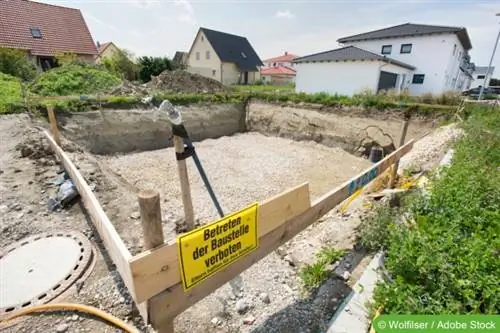
Note:
Land ready for construction, on the other hand, is already fully developed and can be developed according to the plans drawn up.
Legal basis
The concept of unfinished building land is precisely defined in the following legal regulations:
- § 5 Para. 3 of the Real Estate Valuation Ordinance (ImmoWertV)
- §§ 30, 33 and 34 of the Building Code (BauGB)
According to these definitions, there is an obligation to develop raw building land that is officially intended for use. Anyone who wants to sell unfinished building land must either ensure a connection to the supply network themselves or sell the land for a selling price below the value of land ready for construction, i.e. finished building land.
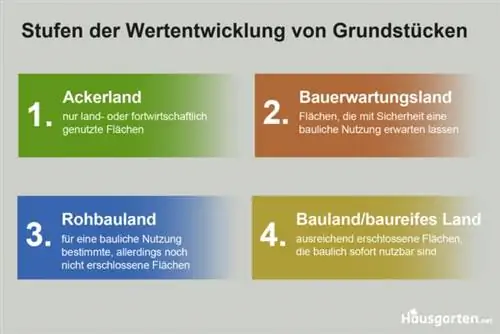
Tip:
In Germany, properties are divided into four development stages, with unfinished building land belonging to the third stage before land ready for construction (stage 4). This means that raw building land is considered an intermediate step from land expected to be built to land ready for construction.
Difference between gross and net unfinished building land
The legislature also distinguishes between gross and net raw building land. Gross unfinished land is understood to mean unfinished land that
- also includes the public areas of the planning area that are particularly necessary for development
- is only legally binding with regard to the development plan
The net raw building land, on the other hand, refers exclusively to the building plots that have not yet been developed, as the areas have already been transferred for development in this phase.
Frequently asked questions
What is the difference between unfinished building land and building land?
The big difference between unfinished building land and prospective building land lies in the legal certainty: With prospective building land, you can only speculate that it will be allowed to be built on at some point - but this is not certain. This is different for unfinished building land; here the building law already exists and is therefore no longer speculative. That's why the unfinished building land is also part of level 3, while the building land is level 2 and is significantly cheaper to purchase.
How is unfinished building land taxed?
In terms of property tax law, unfinished building land - just like building land - is considered undeveloped property, for which "property tax B" applies on the property tax form. According to the legal definition, this means a piece of land that has not (yet) been developed and is in a condition suitable for development.
What property tax applies to unfinished land?
There is a lower property tax for undeveloped properties than for developed properties. The exact amount is determined based on the land value, which is the average value of properties within a municipality. This is redefined annually and can be viewed on standard land value maps available to the responsible authorities. In addition, the value of the unfinished land can also be obtained from a committee of experts.

